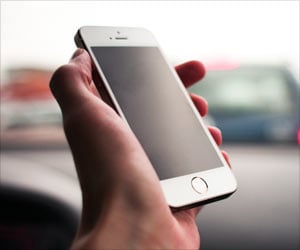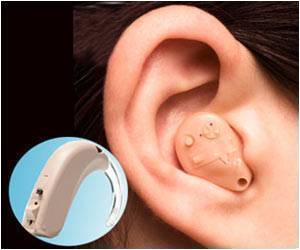- Smartphone features that can help people with hearing loss
- Hearing loss is a common problem that affects many people globally, and it is important to safeguard your hearing in loud environments
- Features available on both iPhone and Android devices, such as Live Caption and Live Listen, can assist users with hearing difficulties
You probably have a device in your pocket that can help you hear the doorbell or follow discussions in busy situations, or you frequently find yourself cranking up the TV level. We often associate accessibility features with people who have serious hearing loss, but the truth is that many of us can benefit.
I've compiled a list of smartphone features that I evaluated with the help of family members who have varied degrees of hearing loss. I also spoke with Apple and Google to learn more about these iPhone and Android features. These companies promise to collaborate with deaf and hard-of-hearing groups to solicit input and new ideas.
Preventing Hearing Loss Using Smartphone
There are numerous causes of hearing loss, but one significant one that we should all work to avoid is prolonged exposure to loud noise (85 decibels or higher). Hearing loss is frequently irreversible, and hearing damage can result in persistent problems such as tinnitus (a ringing in the ears), thus it is critical to safeguard your hearing in loud surroundings.Let your Smartphone Take Care of Your Hearing
It might be tough for us to evaluate volume levels effectively, so why not let your phone or smartwatch handle it for you?
Begin by establishing a maximum volume limit on your phone. We have instructions for both iPhones and Android devices here.
Apple provides a few built-in functions that might help you track loudness. Go to Settings > Control Center > Hearing if you have headphones or earbuds connected to your iPhone or iPad. When you connect your headphones and start playing audio, open the Control Center and tap the ear icon to see the decibel level. If your headphones have a microphone, you can use Live Listen to measure the amount of noise in your surroundings.
Do you own an Apple Watch?
On your iPhone, launch the Apple Watch app, select My Watch, and then Noise > Noise Threshold. You will see WHO exposure limits and can specify a decibel level so that your Apple Watch informs you when the average sound level reaches or surpasses that threshold for three minutes. With the Health app on your iPhone, under Hearing on the Explore tab, you may check headphone audio and surrounding sound levels over the last year.
What’s in the Android Store that can Protect your Hearing?
Although Android does not have built-in volume measurement, you can use a free app like Sound Meter to measure the noise around you in decibels (although the accuracy will depend on the quality of the microphones in your device).
Use hearing protection in noisy places, such as concerts, to lower your risk. For more information, see our Best Earplugs guide.
Google Live Caption was announced in 2019 and can automatically caption movies and spoken audio on your smartphone in real-time without a Wi-Fi or cellular connection (everything happens on-device). To use it, go to Settings > Accessibility > Live Caption on any device running Android 10 or later. To find out what Android version you have, go to Settings > About phone > Android version.
Live Caption is also available in Google's Chrome browser. Toggle on Live Caption by clicking More (three vertical dots) > Settings > Accessibility.
Can Pixel Rescue Your Sense of Hearing?
If you have a Pixel 2 or subsequent Pixel phone, you can use Live Caption for Calls, albeit it currently only works in English. On compatible devices, this is part of Live Caption, so you'll be asked if you want to use it every time you make or take a call if Live Caption is enabled, but you can turn it off by going to Settings > Accessibility > Live Caption > Caption calls.
If you have a Pixel 6 or 6 Pro (9/10, WIRED Recommends), you may get an additional option by going to Settings > Accessibility > Live Caption > Type responses during calls. This allows you to type responses that will be read aloud to the caller. You can also choose the voice to use for these typed responses.
Apple does not have a live-captioning system, but it has revealed that a new Live Captions feature will be available for the iPhone, iPad, and Mac later this year. It is compatible with live streaming video, FaceTime calls, video-conferencing programs, and even in-person interactions. It’ll be compatible with iPhone 11 and later when you install iOS 16, iPad models with A12 Bionic and later, and Macs with Apple silicon, but it will initially. Until it arrives, you can go to Settings > Accessibility > Subtitles & Captioning to turn on Closed Captions + SDH (subtitles for the deaf or hard of hearing).
When you install iOS 16, it will be compatible with iPhone 11 and later, iPad devices with A12 Bionic and later, and Macs with Apple hardware, but it will only support English. initially. Until it arrives, you can go to Settings > Accessibility > Subtitles & Captioning to turn on Closed Captions + SDH (subtitles for the deaf or hard of hearing).
The Live Transcribe & Notification app for Android, which was released in 2019, turns speech to text in real-time on your phone screen and supports more than 80 languages. It can also be used to type answers. The program can be installed and used on any phone running Android 6.0 or higher, but functionality is baked in on Google's Pixel phones, which can be accessed via Settings > Accessibility > Live Transcribe. You can enable a shortcut for easy access.
Dimitri Kanevsky, a Google research scientist who has been deaf since childhood, inspired the software, which was built with feedback from Gallaudet University. Live Transcribe is a tool that can be customized. You can save transcriptions for future use, add custom words and phrases, and even customize your transcription.
Apple currently lacks a comparable function, though it appears that the upcoming Live Captions will be capable of transcribing talks. There are a few iOS apps that may be beneficial for iPhone owners before Live Captions appear, such as Group Transcribe from Microsoft.
How to Get Your Phone to Listen to You
Whether you find yourself missing visitors at your door because you don't hear the doorbell or a knock, or if you're concerned about missing a smoke alarm, your smartphone can listen for you.Sound Recognition is an Apple feature that can be found in Settings > Accessibility. It allows your iPhone to listen to different sounds (fire or smoke alarms, cats or dogs, doorbells, knocking, glass breaking, a baby crying, and more). You need also to go to Settings > Accessibility > Audio/Visual and enable LED Flash for Alerts.
Google's Live Transcribe & Notification app has a similar capability. It is built into Pixel phones, however, most other Android smartphones will require you to download and install the software. Open Sound Notifications by going to Settings > Accessibility > Sound Notifications. Choose sounds and adjust Notification options (including flashing the phone's flash to inform you) by tapping the cog at the upper right.
How to Filter Sounds Using Headphones
Whether you use wireless earbuds or wireless headphones, your smartphone might help you filter and amplify sound.You may eliminate noise, enhance quiet sounds, and increase high or low frequencies with the Sound Amplifier app for Android, and you can apply various settings to each ear. It involves the usage of headphones and can be used while watching videos or other media on your phone.
Source-Medindia












